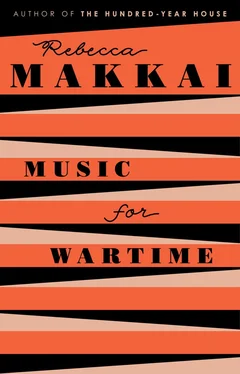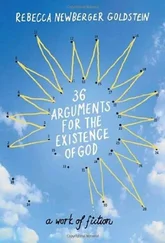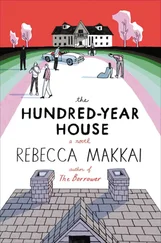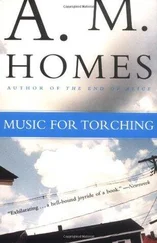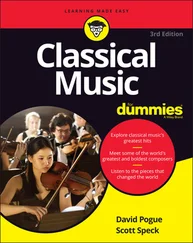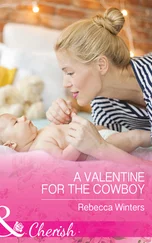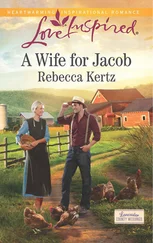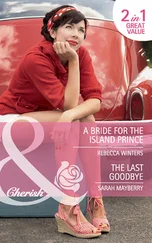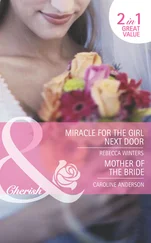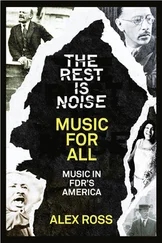I sat at a table in a bakery, a human stone, staring at the photo of Ling and Silva that accompanied the second half of the article. I wanted to call Juney up, to tell her we’d found him at last. I wanted to say, Your saint came through . But Juney was nine years gone. An overdose. I wanted to say, We should’ve looked a little south of Gramercy Park . I wanted to say, Juney, we need to redo the tallies . Juney was the one who kept lists of the ones we’d lost. She was the one to know how many we buried each year, how old they were, how much they’d left unpainted. I wanted to say, Juney, we found him. So why does it feel like we’ve lost something? I sat there a very long time. The waitress knew me, and when she saw my face she said, “Oh, honey.” She brought me a scone.
Chapman, I heard, was devastated and inarticulate — both vindicated and humiliated. According to his sister, he didn’t eat for a week. Certainly he’d known about the more malicious theories, and here was proof of his innocence. But he refused all interviews on the matter. He’d moved down to Evans, Virginia, a few years earlier, to a converted barn, and was undergoing treatment for pancreatic cancer, a sickness he blamed on alcohol even as he continued to drink. No one was much surprised that he didn’t attend Ling’s retrospective.
I did go. I wouldn’t necessarily have placed the work as Ling’s — difficult, angular shapes, hardware and nails, a roughness and anger I found completely unfamiliar. The room was full of faces I’d never seen. What was I expecting? Juney Kespert and the other ghosts of twenty years past? I suppose I did. I expected Hugh Steers and Patrick Angus and Luis Frangella. I expected Peter Hujar. I expected, somehow, Chapman and Ling, arm in arm, a mere twenty years late to the party. In the middle of the room, I mouthed Juney’s prayer. Not an actual prayer, just an homage, maybe. Because I didn’t believe anything would happen. I couldn’t raise the dead, I couldn’t bring back our innocence, I couldn’t even believe — as Chapman could — that something remarkable was always around the corner. My only magic was in survival.

The rumor started that Chapman was working on a portrait of Ling. The two of us only communicated by occasional e-mail at that point — but we shared a dealer, the young and optimistic Beatrice, and she was the one to whisper to me in awe. “It’s eleven feet by thirteen,” she said. “And it’s not a photo.”
“He’s painting again?”
She leaned in. “With his fist .”
Beatrice was good to me. I’d spent the past two decades painting heaps of clothes, medicine cabinets, chairs. They sold, but I didn’t love them. If they were about my life, it was obliquely — the chairs and clothes being, after all, empty.
When the portrait arrived in New York six months later, I walked up to the gallery just to see it. Bea left me alone with the thing. She locked the front door.
I was more overwhelmed than I’d been by any piece of art since I was a very young man. Primary colors plus green, a sloppy stippling done, yes, with the fist. It was clear he hadn’t really punched it, because there was no splattering, no puckering. He must have pressed the backs of his fingers patiently to the canvas a thousand times. Even so, a sick man shouldn’t have tackled a piece that large. I knew, and the dealer knew, and I believe everyone who cared about it knew, that this was his last work. How could you continue, after something like this? What would be left to give?
It was Expressionist, if you had to categorize it. Maybe a bit derivative of Chuck Close, but only in scope — not in execution.
And if you stood across the room, it was Ling.
Not Ling as we’d all known him, but Ling as he’d appeared in the Times photo. Smiling, better than he’d looked in ’88 despite the white hair, despite the jowls. What had it meant for Chapman to put his fist to Ling’s face again? I’d never be able to ask. Was he absolving him, or executing him? Or had these always, to Chapman, been the same thing?

There’s one more story about Chapman, the one we told at his funeral. After his funeral, rather, at the Thoroughfare Diner in Evans, Virginia. Imagine the New York art world — three hundred of us, at least, dealers, painters, photographers, critics, former students — descending on the bed-and-breakfasts, the truck stops, the knickknack stores of a town that hadn’t seen a gay man, as far as they knew, since that one kid took off for San Francisco in the nineties. Chapman had blended in fine, beard to his chest by that point, rusty red pickup.
We took turns telling it, adding up the different details he’d given each of us: how toward the end, in the shower of his barn studio’s bathroom, Chapman slipped and fell. He hit his head and he twisted his ankle. Dizzy, unable to bend his neck, foot useless, he lay a long time on the bottom of the tub, feeling the water pelt his knees. He was weak from the cancer, weaker still from the chemo — and the wall of the tub was a porcelain cliff, insurmountable. He might pull up with his left hand to sit, but then what? Cross his injured right leg over and step out with it, lose his balance again on the wet floor? The metal safety rail was inches above the reach of his fingers. He knew he was going to die there.
He told people, later, about looking out the open bathroom door — how the only thing he could see was the giant portrait of Ling across the studio, half-finished. Ling’s eye, Ling’s ear, Ling’s hairline. He told everyone that Ling had saved him. I believe something different. I believe he summoned his strength one last time so he could save Ling. So he could resurrect him, finish him, send him home to New York. What I’m saying is: If you have a fish in your hand, it’s easier to run.
The solution came sudden and clear as a miracle: Hand over shoulder, blind, he stopped the drain with the rubber plug and switched the control from shower to faucet. He waited twenty minutes as the tub filled around him, as water poured over the side. It bore him up, Noah on the flood, until he could finally grasp the metal bar. He pushed against it, sailed himself to the lip of the tub, to the waterfall that ended on the tile floor and the submerged bath mat. It wasn’t graceful, he told us later, but we suspected it was more than that. It was grace itself. He floated over the edge, dropped into the puddle below, and — blessed, exhausted, fingers pruned — rolled to safety.
SUSPENSION: APRIL 20, 1984
T he most alarming photograph in my possession: my sixth birthday, eight children gathered at a picnic table, staring at a bomb. In the background, my grandfather’s hands rest on his bald head; my father stares at the sky. Above and behind them, unnoticed by anyone but the camera, my sister is flying.

Five minutes later, my mother would exchange the camera for a tray of chocolate cupcakes. Erin Tazio would throw the bomb up into the tree house, and as we sucked the crumbs off our crimped wrappers, we waited for the little hut to fly apart in fiery shards.

Ten minutes later, the sky would crack open with thunder as we all ran screaming for the house. My sister, underneath the neighbor’s trampoline, at first did not understand the sound of slicing rain.

Читать дальше
